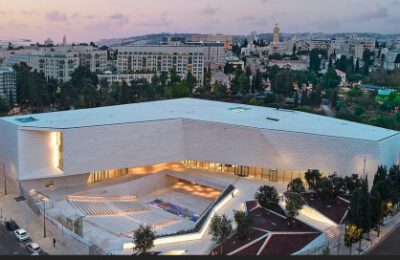By Faygie Holt
In 1991, Jay Feinberg was facing a battle with leukemia and needed a bone-marrow transplant. Some 55,000 people got tested in the hopes of finding him a suitable match. Four years later and facing a critical moment in his illness, a match was finally found.
Today, he is committed to helping others find life-saving bone marrow and stem-cell matches through the nonprofit he founded, the Gift of Life Marrow Registry.
As the organization that has helped facilitate 15,600 matches and more than 3,550 transplants prepares for a new chapter — it’s about to relocate to a new building, a mile from its current offices.
Q: Gift of Life is moving into a new facility in March in Boca Raton, Fla. Why?
A: The registry is growing and because it’s growing we need more staff, more resources and, as a result, more space.
Another important reason is that we are starting a new service at Gift of Life that we haven’t done before.
Q: Tell us a little about the new service.
A: We are opening an Apheresis* center — a stem-cell collection facility — to give patients a better chance at a cure by shortening the time from when a stem-cell donor is found until the patient can receive the donation.
Apheresis is the process by which blood is removed from a donor’s arm, run through a cell-separating machine that pulls out the stem cell and gives blood back to the donor in other arm.
You would think if a patient has a bone marrow or stem-cell match, it guarantees that they will have that transplant. But the reality is that 50% of patients who have a match never get to have a transplant because it takes too long. We aim to shorten that time by insourcing the donation process.
The collection center we are opening is exclusively for donors of stem-cell transplants.
Currently, such donors have to go to hospitals and blood centers, where they are competing for resources with all the other activities that a facility is undertaking.
For example, if the transplant physician tells us they need the donation on July 3, we will go to the collection center and say this is the date we need. Because they are so busy, they could tell us they can’t do it until Aug. 4, and that’s bad for the patient at the other end.
Ours will be the first stem-cell collection facility run by a registry itself.
We will control the entire process, so that if a patient needs a donation on July 3, he or she will have that donation on July 3.
And if a donor needs to donate on a weekend because that’s in their or the patient’s best interest, we will make that happen.
This will significantly increase the number of transplants that take place, saving more lives than ever before.
Q: How has awareness of bone-marrow donations changed in the last decade or so?
A: From the perspective of marrow and stem-cell donations, it has changed a lot.
For one, if you look back about 15 years ago, blood had to be drawn to join a registry. It’s now much easier to test people with a simple cheek swab.
While you may think that bone marrow donations are always a surgical procedure from the hip, today 80% of donors actually donate stem cells through the arm. They sit on a recliner chair with a needle in each arm. Blood is taken from one arm. It is then run through a cell-separating machine that spins the blood very fast, removes the stem cells and gives the blood back to the donor in their other arm.
The process takes about four hours. A donor can relax and watch a movie while they are undergoing the process, or talk to friend or spouse or whomever is with them, and when they are done, they go home.
That’s made it much easier for potential donors who might initially be fearful of the donation process. Our goal is to increase that awareness.
We’ve seen a significant upswing of people joining the registry each year, and we hope that will continue. This year alone, 40,000 people were tested to be stem-cell donors.
Q: What drives people to join a bone-marrow registry?
A: Just about everybody is motivated when there is a personal story connected to it. It’s always the case when people see a flyer or get copied on an email or a post on social media that there is an urgent appeal for someone who has leukemia who needs a transplant.
People may see a sign that says a bone-marrow drive is happening at a local synagogue or JCC and they come get tested, but not nearly as much as if they hear about a specific little girl in their neighborhood who needs a bone-marrow transplant.
Human-interest stories engage people. I don’t think that will ever change.

















